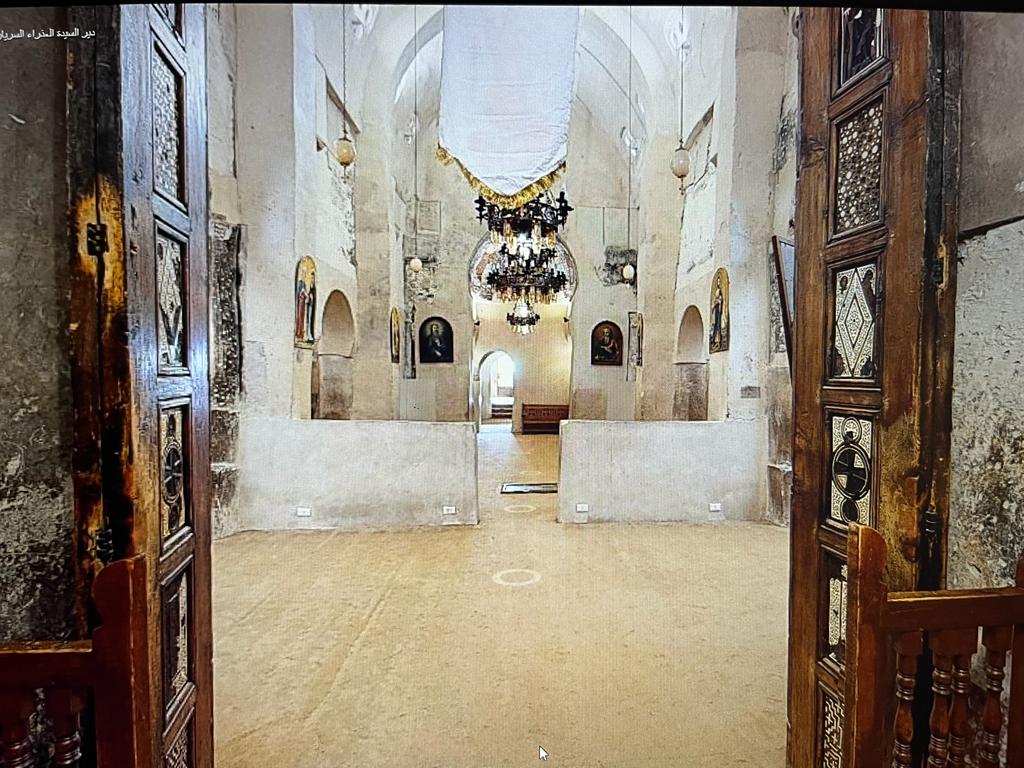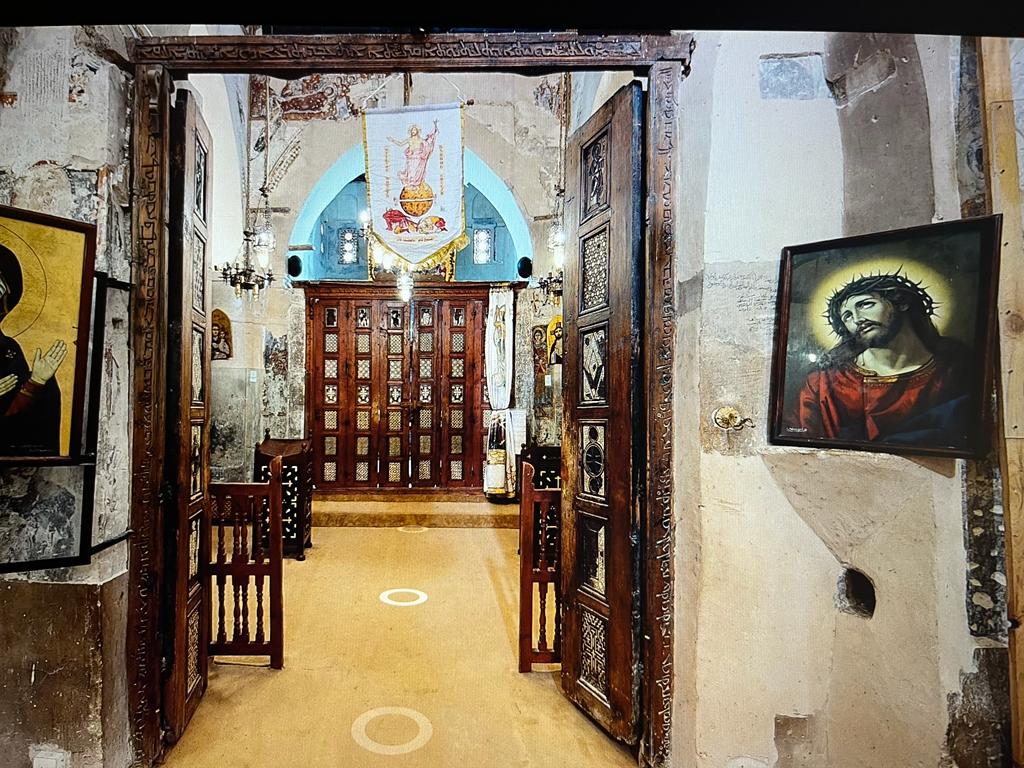The first chorus of the church is separated from the second by a large wooden door facing the door of the altar and is very similar to it. It is also inlaid with ivory and has inscriptions in the Syrian language explaining the date of making this door from the year 926 until the year 927 by the head of the monastery, Father Musa al-Nasibi.
The door consists of four leaves and six rows. The upper part contains four icons made of wood inlaid with ivory, and they are from right to left: St. Mark the Apostle, the first patriarch of Alexandria, Christ (Immanuel), the Virgin Mary, and finally St. Peter the Apostle. Therefore, this row is used as an iconostasis. We find St. Peter has a beard, standing among the plants, carrying a scroll in his left hand, and placing his right hand on his chest. Then, we find the Virgin Mary, who is represented in the frontal position and on either side of her are some plants. As for the Lord Jesus Christ, he appears in the form of a young man without a beard, and His right hand is raised as a sign of blessing. He holds in His left hand the Holy Bible, and a halo of light surrounds His head, inside which, there is a shape of a cross with eight ends. Under the left foot of the Lord Jesus Christ, there shows a dragon or a serpent – this is to say, He is the offspring of the woman who crushed the head of the serpent. Finally, we find St. Mark the Apostle, represented with a short pointed beard, holding in his left hand a book, i.e. the Gospel of Mark, and raising his right hand.Then we find five rows showing similar circle shapes. The third row represents plant scenes surrounded by a rhombus, and inside the rhombus there is a cross with eight ends. The fourth row has an ornament in the shape of a flower, and above it, there are two small circles containing two crosses. There is a great similarity between the third and fifth row, but instead of having a rhombus shape in the third row, we find a rectangular shape in the fifth row.
As for the door handle, it is made of metal, and it is also in the form of a cross with eight ends. This cross with eight ends is more widespread in the Syrian Church. We find it in the middle of the door frame of the main sanctuary and also in the shapes of crosses on the first and the second door.













